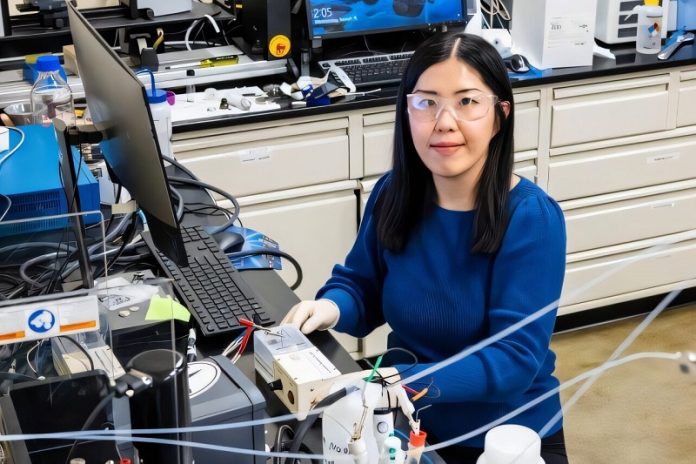
Scientists at Oak Ridge National Laboratory (ORNL) are working to create a better battery for storing renewable energy, like wind and solar power.
Since these energy sources don’t produce power continuously, developing a way to store this energy long-term is essential for keeping the electric grid running smoothly.
By studying what causes these new batteries to fail, researchers hope to design a more dependable solution.
Most batteries we use today rely on a liquid substance, called an electrolyte, to help store and release energy as ions—tiny charged particles—move between two battery parts known as electrodes.
However, ORNL researchers have designed a battery that uses a solid material instead of a liquid electrolyte.
This solid electrolyte, which uses sodium ions, is built to be stronger, more durable, and able to store more energy.
Solid electrolytes are seen as a promising advancement in battery technology, but they still face some challenges, especially under high-demand situations where they may fail.
To learn more, ORNL’s team tested their solid electrolyte battery at Argonne National Laboratory using a particle accelerator with a powerful X-ray beam.
This allowed the scientists to see what happens inside the battery under high voltage or current.
During testing, they found that sodium ions sometimes gather in small pores within the solid electrolyte, forming tiny structures that eventually cause a short circuit in the battery. By understanding how and why these issues happen, scientists can work on improving the battery design and the materials used.
“This information helps us improve the solid electrolyte, which could be a key to storing renewable energy for longer periods,” said ORNL researcher Mengya Li.
The team’s findings, recently published in the journal Batteries & Supercaps, could help lead to the development of batteries that make renewable energy a more stable and reliable source for the electric grid.
This research brings us one step closer to creating efficient, long-lasting batteries that could make clean energy sources more accessible for everyone.



